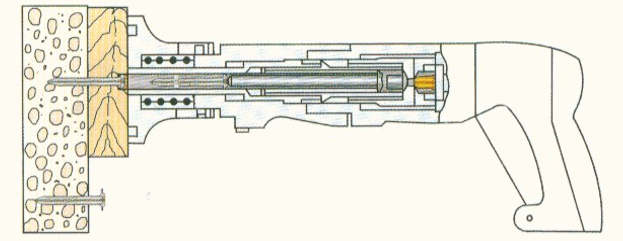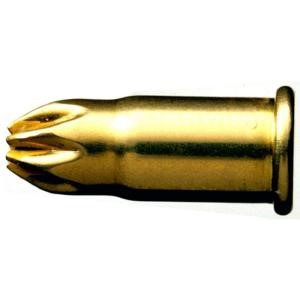HC Plastics News: DuPont's Rapid Fabric Formation technology deploys FibrflexTM flexible coated tows at high shear angles. US "Innovative Thermoplastic Composite Manufacturing Research Technology" achieved results The United States Advanced Composites Manufacturing Innovation Institute (IACMI), in conjunction with the University of Tennessee and the US Department of Energy, announced the first phase of a project led by DuPont, in collaboration with Fibrtec and Purdue University. Results. The project is dedicated to increasing the capacity and employability of the US composites industry in the country. As a result of the first phase, a new carbon fiber composite manufacturing process was developed, which improved the formability of the fabric compared to conventional woven materials. The results of the first phase are driving the project into the second phase of research, which will ultimately reduce the cost of carbon fiber composite structures, making them more suitable for use in automotive and other high-volume industries, thereby reducing implicit energy consumption (referring to products). The total energy consumed in the whole process of processing, manufacturing and transportation), and directly create employment opportunities in the industry. The new material created by the IACMI project combines Fibrtec's flexible coated tow FibrflexTM and DuPont's Rapid Fabric Formation (RFF) technology, as well as DuPont's proprietary polyamide. Resin. All of this is supported by the extensive modeling and characterization capabilities offered by Purdue University. The coated tow material is a partially impregnated carbon fiber/polyamide composite tow, and since the carbon fibers are not completely wetted by the polyamide, a tow material that is more flexible than the fully impregnated material is obtained. The RFF process is an ultra-fast method of fabricating fabrics from tows that can be used in different orientations without the need to lift the tow. Testing, modeling and simulation, all of which demonstrate that this process/material combination is a highly promising method for producing lower cost continuous fiber reinforced polymer (CFRP) thermoplastics with excellent physics The performance is well adapted to the requirements of the molding process. “Fibrtec's globally differentiated thermoplastic composites have contributed to our groundbreaking results in the first phase of the IACMI project in collaboration with DuPont and Purdue University. Organizational innovation through the promotion of small and medium-sized enterprises (SMEs) like Fibrtec And the creation of public/private partnerships in the IACMI framework to accelerate the penetration of structural composites into the automotive industry. For companies like Fibrtec, this provides a great source of world-class resources that are often not available. Opportunity. We look forward to continuing the second phase of joint development," said Robert Davies, CEO of Fibrtec. The goal of the project is to reduce the manufacture of carbon fiber reinforced polymer composites by using near net shape processes such as automated fiber placement (AFP) on relatively inexpensive carbon fiber/polymer prepreg tows. cost. The coated tow is easy to handle, and the pseudo fabric thus obtained can be overhanged without difficulty during the forming process without shear locking. The project's partners have demonstrated that with this strategy, the process can use expensive carbon fiber only where needed, thereby reducing carbon fiber waste by 30% and creating predictable deformation during the pre-forming press. Fiber preforms. The first phase of the project brought better results than expected. With this processing scheme, the implied energy consumption was reduced by more than 40%. “This project addresses some of the most challenging issues facing composite manufacturing and the commercialization of composites in high-volume markets. The completion of the first phase heralds a significant impact on the results. One step forward is the ability to create low-cost components with high design freedom to achieve the performance required for challenging applications. This is one of the first projects launched by IACMI, collaboration and collaboration. A good example of accelerating innovation. We look forward to continuing to make new progress in the second phase of the project,†said Jan Sawgle, DuPont Transportation and Advanced Polymers Project Manager. “The cooperation between Purdue University, Fibrtec and DuPont on this project demonstrates the ability of public-private partnerships to foster innovative capabilities and provide new solutions to real-world problems. In this project, we focus on ' The "informed performance" aspect of manufacturing is research, which is critical for the design of composite parts and structures," said Michael Bogdanor, director of the composite design studio at the Center for Composites Manufacturing and Simulation at Purdue University. In one phase, it is instructive to develop new simulation tools to predict the behavior of RFF and FibrFlex technologies, which provides a new way to predict the behavior of material systems in manufacturing and the final performance of components." “We are very satisfied with the results achieved in the first phase and look forward to the continued development of these advanced carbon fiber composites,†said IACMI CEO John A. Hopkins. “Through the second phase of the project, we will be more comprehensive. Describe the forms of these new carbon fiber thermoplastic prepregs and validate their use in molding processes suitable for high volume, low cost production. This will prove they are suitable for high volume applications, especially in the automotive industry." Compared to the other two typical processes, the project offers a new CFRP manufacturing method. These two typical processes have significant drawbacks that limit their high-volume applications that are mainstream in the automotive and aerospace industries. One of the current mainstream techniques is to weave dry carbon fiber tow into a fabric, layer the fabric with a thermoplastic resin film, then heat and compress them into a well-bonded composite. Although this method is ultimately effective in making carbon fiber fabrics, this process has several disadvantages. One of the disadvantages is that the carbon fibers often break during the weaving process, thereby releasing the short, electrically conductive carbon fiber strands to the local portion. Environment. Therefore, the surrounding weaving machines and equipment must be electrically insulated. Another disadvantage is that it is relatively slow, which is related to this traditional process. The carbon fiber composite is produced by this weaving method at a speed of about 1/3 of the speed required to manufacture the glass fiber fabric. A second typical technique is to impregnate and flatten the carbon fiber tow with a thermoplastic resin to form a fully voided composite strip of low voids. These strips are then woven or laid and fixed to form a fabric which is then quickly consolidated into the final composite part. A major problem with this process is the handling of UD tapes, which are hard and brittle and can break when bent to a small radius at room temperature. This rigid property makes the formation of the fabric into a fabric a slow and expensive process. As a result of the first phase led by DuPont, Fibrtec confirmed that this progress can be achieved in the production of carbon fiber composites, while also revealing new opportunities for the application of carbon fiber composites in the automotive and aerospace industries, as carbon fiber composites Production becomes easier and safer, making it more economical and feasible in high-volume production. Editor in charge: Yao Chunlin
General Purpose Powder-Actuated System is used for building fastening, which have three parts: Actuated tools, Cartridges and fasteners. When Actuated tool strikes cartridge and cartridge will explode in the inner of tools and produce a lot of high temperature and high pressure gas. The gas will push the piston and the piston will push the fasteners into the basement. Or the gas will push the fasteners directly into the basement. Like this, we can fix a lot of things into concrete and steel basement tightly.
The fundamental is as the following:
The Actuated tools are classified for direct tools and undirect tools, we can also called high velocity and Low velocity tool, the fundamental is as the following:
High velocity tool:
Low velocity tool:
Based on different purpose, Cartridges are classified for different calibers and dimensions. The usual caliber and dimension is as the following:
.27calX11mm(S1)
.22calx15mm(S5)
.22calx16mm(S52)
.27calx18mm(S3)
.25calX16mm(S43)
At the same time, each caliber cartridge is classified for different specification based on the quantity of inner powder, which is marked by different color. when the color is more darker, the power level is stronger. otherwise, the power lever is lighter.
The fasteners are classified for different categories. Each different category is classified for different specification based on different length and diameter. At the same time, it is can also be re-designed based on special use.
The packages are as the following:
1. Tools: one tool/ plastic box/carton or five boxes/carton
2.Cartridge: 100pcs/paper or plastic box, 100boxes/carton.
3. Fasteners: 100pcs/paper box, XX boxes/carton.
For shipment, all cartons will packed by pallet.
General Purpose Powder-Actuated Systems General Purpose Powder-Actuated Systems,Powder-Actuated Systems,Powder Actuated Fasteners,Powder Actu YIBIN CITY NANXI DISTRICT QIANGXIN PLASTIC CO.,LTD. , https://www.homsetfastening.com




